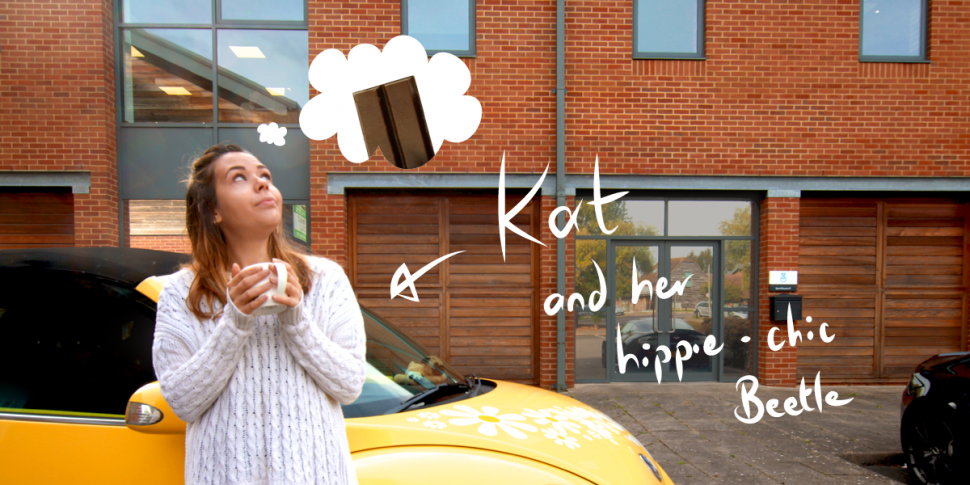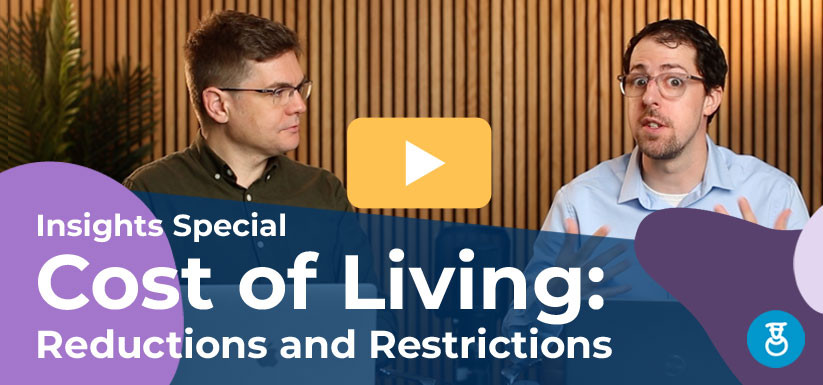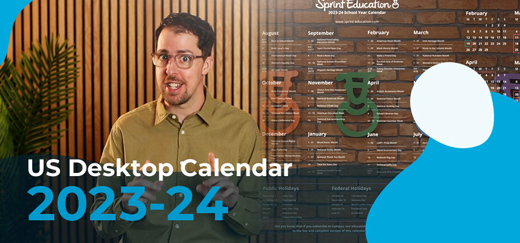Put Your Email on a Vegan Diet: Optimisation Tips From Our Newest Copywriter
Put Your Email on a Vegan Diet: Optimisation Tips From Our Newest Copywriter
In this blog, Sprint Education's newest content curator explains how her vegan diet helps her keep clients' emails lean and focused.
In this blog, Sprint Education's newest content curator explains how her vegan diet helps her keep clients' emails lean and focused.

My first month at Sprint Education has undoubtedly been the most challenging yet fulfilling of my entire (albeit somewhat short) working life. As Sprint’s newest copywriter and designer, I’ve been up to my eyes in subject lines, statistics, and super-cool graphics to make sure client emails get noticed during one of the busiest months of school marketing.
Luckily, my fantastic colleagues at Sprint Education have welcomed me with open arms (and paws) and have been on hand to share their wealth of knowledge. I’ve also been able to apply some tricks of the trade I learned during my three-year software development apprenticeship, freelance marketing work, and, funnily enough, through being a vegan.
I know exactly what you’re thinking, but stick with me. I may eat plants, have covered my bright yellow Beetle in daisy stickers, and have uttered the phrase ‘give peace a chance’ on several occasions, but my borderline-hippy lifestyle has actually taught me some valuable tips to curating the perfect email.
Cut the fat
Contrary to popular belief, vegans don’t live off of lettuce and soil – but what I do eat has far less saturated fat (and guilt) than their animal-derivative counterparts. Cutting out what I see as unnecessary (sorry, meat-eaters!) makes me feel lighter, cleaner, and more refreshed – and that’s exactly how your emails should be.
Teachers don’t have the time to read pages and pages about your new product – in fact, you only have two seconds to capture their interest, so cutting your content right back and presenting them with a clean, fresh email that immediately draws their eye to your main call of action is the key to capturing a lead.
Feeding teachers only the essentials has two major benefits. For one, drip-feeding them information across the entire strategy makes the product much more intriguing, and they’ll be way more likely to click through (plus it avoids repetition between emails, something that can quickly lose a teacher’s interest). Secondly, it keeps the main call to action right at the top of the email – you never want your teachers to have to scroll down to see it (check out this email heat map to see what I mean!).
Dare to be different
Whenever I announce that I’m a vegan, I always get that look, and every day during the drink rounds I can guarantee at least one person will comment on the funny colour of my oat milk tea. I don’t do it to intentionally stand out – but that’s exactly what I do when I put emails together.
Teachers receive handfuls of emails a day but only open a select few, so we need to offer them something different to make them notice our clients. Going against the norm isn’t always easy – if someone else’s email had a great open rate, why would you do anything different? – but, when executed correctly, it certainly pays off.
Think about it – the emails that stand out most to you are often the ones with a humorous tone, jazzy graphics, and a unique spin on their sales pitch; all of which make for a really creative, quirky email. Of course, a client’s emails need to fit in with their brand, but there’s no reason why we can’t have fun with it - oh, and a few freebies will help sweeten the deal, too!
Dedication, dedication, dedication (that’s what you need)
Sometimes I go home and all I want is a Kit-Kat. There, I said it. I’d never give in, but I’ll still spend an ungodly amount of time thinking about it. Luckily, I’m just as dedicated to creating the perfect campaign.
When I start working on a strategy, I’ll set aside some time to have a good look around the client’s website, past marketing strategies, and the brief they send us. If I’m not quite sure what they’re looking for, I’ll always take time out of my day to get in contact with them and discuss their plan. This not only saves you from redoing their campaign when doing whatever you assumed is inevitably wrong, but also reassures them that they’re in good hands.
Putting the time into a campaign and making your customer feel looked after will encourage them to book in for another campaign, and, if your emails reflect the time you put into them, they’re more likely to achieve higher click through rates - and I promise hearing the success your client has achieved thanks to your email strategy tastes way better than a Kit-Kat!
Despite me telling you to keep your emails short and sweet, I think I’ve gone on long enough. I do hope you’ve learned a thing or two about constructing the perfect email – or at least feel inspired to swap your afternoon chocolate bar for something else!*
*But not anything with peanuts in, because I once ate one out of curiosity to see if I’d outgrown my childhood allergy. Although I enjoyed my ambulance ride (as much as I could in that situation, anyway) I don’t really recommend this, although I can conclude I am, most definitely, still allergic. So now everyone has to smuggle their peanuts around the office. Sorry guys.
Tags
Education Marketing
Email Teachers
Marketing to Schools
Selling to Schools
Similar Articles


VIDEO: Reductions and Restrictions - Cost of Living Special
Watch episode two of our new video series, in which we unpack how the cost of living crisis affects teaching, learning, and school spending.

The Unstoppable Rise of MATs
Learn how Multi-Academy Trusts now dominate much of the education purchasing landscape - and why their incredible growth is good news for your edu-sales...


Expert marketing to K-12 support and solutions
Expert marketing to K-12 solutions
Email Principals, Teachers, and District Staff Inboxes
Email teachers and staff inboxes
Sell More to US and Global Schools and Districts
Sell more to schools and districts
































